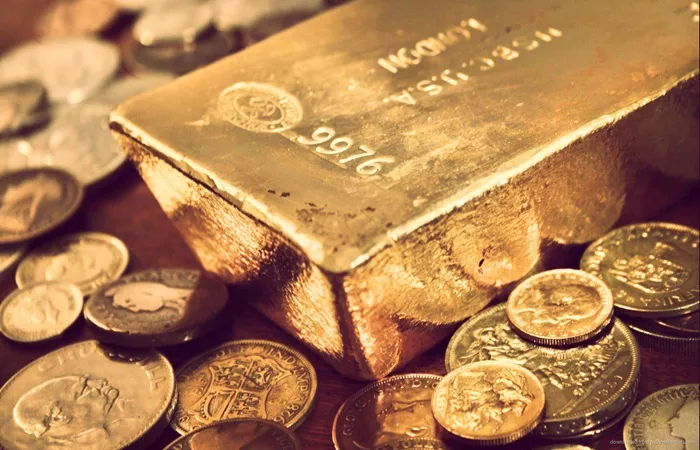After a powerful rally that peaked in April, gold has entered a consolidation phase, drifting within a narrow but downward-sloping range. The precious metal reached an all-time high of USD 3,500 before correcting sharply—a move largely attributed to former President Trump’s decision to roll back a number of aggressive tariffs that had previously spurred market volatility. The policy shift, viewed as an attempt to stabilize sentiment amid mounting economic strain, removed a key support for gold’s surge.
At present, gold lacks a decisive trend, as mixed macroeconomic signals and investor uncertainty continue to cloud market direction. Markets are closely watching for signs of how Trump’s trade revisions will impact the broader economy. Many analysts remain cautious, warning that the longer-term effects could be negative—conditions that may ultimately bolster gold’s appeal, particularly in the face of stagflation risks, where inflation persists amid slowing growth.
While future U.S. trade agreements—particularly with Europe and Asia—could moderate some economic headwinds and dampen demand for safe-haven assets, ongoing concerns linger. Chief among them is the widening U.S. budget deficit, which raises red flags over long-term fiscal health. Combined with continued central bank demand and stagflation fears, this backdrop is expected to sustain investor interest in gold and other precious metals, including silver and platinum.
Gold: Pressing Against Resistance
Technically, gold is showing a pattern of lower highs, signaling bearish momentum in the short term. The current resistance zone lies between USD 3,347 and USD 3,355, the latter corresponding to the 0.618 Fibonacci retracement level of the April–May correction. A breakout above this area is essential to reignite momentum buying. On the downside, key support levels are seen at USD 3,272 and USD 3,244, also derived from retracement analysis.
Silver: Stuck in a Range
Silver continues to trade in a broad horizontal range, with firm support at or just below USD 32. Repeated attempts to push higher have stalled near USD 33.70, establishing a clear resistance level. A sustained breakout above this could pave the way for a retest of last October’s 12-year high at USD 34.90.
The gold-silver ratio, currently near 100, remains a useful barometer of relative performance. It spiked to over 105 during April’s turbulence as silver sold off more sharply than gold. Since then, the ratio has eased back, reflecting silver’s recovery amid improving trade sentiment. A move below 98 could indicate growing investor preference for silver over gold, especially as silver tends to benefit from stronger industrial demand during periods of economic optimism.
Platinum: Poised for a Comeback
Long overshadowed by its precious metal peers, platinum is showing signs of resurgence. After falling out of favor over the past decade—culminating in a record 3.6-to-1 gold-to-platinum ratio last month—the metal has staged a technical breakout and is gaining momentum.
The catalyst? A projected third consecutive annual market deficit, according to the World Platinum Investment Council, which expects demand to outpace supply by nearly one million troy ounces this year. Much of the uptick is being driven by automotive sector demand and a surge in Chinese buying of platinum jewelry, bars, and coins. Last month, China recorded its highest platinum imports in over a year, supported by price stability and platinum’s substantial discount to gold.
Technically, platinum recently broke above USD 1,025, clearing a long-term descending trendline from its 2008 high of USD 2,300. It has since advanced to a two-year high near USD 1,100, attracting increased speculative interest. ETF holdings surged by 74,000 ounces, reaching a three-month high, reflecting growing investor confidence.
Outlook
All three metals are now testing critical levels. For gold, a break above key resistance could reinvigorate its long-term bull trend. Silver remains range-bound but could surge if economic sentiment continues to improve. Platinum, buoyed by supply deficits and renewed demand, appears best positioned for further gains. Whether these metals can break out—or fall back—depends on how macroeconomic and policy signals unfold in the coming weeks.
Related topics:
- India Surpasses China in Gold Purchases, Buying 51% More in Three Months
- Qilu Bank Enhances Support for Small Businesses with Innovative Financial Tools
- Bitcoin Poised for a Surge Amid Gold’s Delivery Delays, Expert Claims


